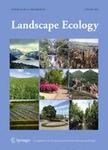版权所有:内蒙古大学图书馆 技术提供:维普资讯• 智图
内蒙古自治区呼和浩特市赛罕区大学西街235号 邮编: 010021

作者机构:Texas A&M Univ Dept Geog College Stn TX 77843 USA Univ Tennessee Dept Geog Knoxville TN 37996 USA
出 版 物:《LANDSCAPE ECOLOGY》 (园林生态学)
年 卷 期:2011年第26卷第2期
页 面:195-209页
核心收录:
学科分类:08[工学] 0708[理学-地球物理学] 09[农学] 0705[理学-地理学] 0902[农学-园艺学] 0713[理学-生态学] 0834[工学-风景园林学(可授工学、农学学位)]
基 金:National Interagency Fire Center [06-3-1-05]
主 题:Fire ecology Forest disturbance Climate Topography Fire perimeters Spatial pattern Great Smoky Mountains National Park Shenandoah National Park Classification and regression tree model
摘 要:Climate and topography are two important controls on spatial patterns of fire disturbance in forests globally, via their influence on fuel moisture and fuel production. To assess the influences of climate and topography on fire disturbance patterns in a temperate forest region, we analyzed the mapped perimeters of fires that burned during 1930-2003 in two national parks in the eastern United States. These were Great Smoky Mountains National Park (GSMNP) in the southern Appalachian Mountains and Shenandoah National Park (SNP) in the central Appalachian Mountains. We conducted GIS analyses to assess trends in area burned under differing climatic conditions and across topographic gradients (elevation, slope position, and aspect). We developed a Classification and Regression Tree model in order to further explore the interactions between topography, climate, and fire. The results demonstrate that climate is a strong driver of both spatial and temporal patterns of wildfire. Fire was most prevalent in the drier SNP than the wetter GSMNP, and during drought years in both parks. Topography also influenced fire occurrence, with relatively dry south-facing aspects, ridges, and lower elevations burning most frequently. However, the strength of topographic trends varied according to the climatic context. Weaker topographic trends emerged in the drier SNP than GSMNP, and during low-PDSI (dry) years than high-PDSI (wet) years in both parks. The apparent influence of climate on the spatial patterning of fire suggests a more general concept, that disturbance-prone landscapes exhibit weaker fine-scale spatial patterning of disturbance than do less disturbance-prone landscapes.